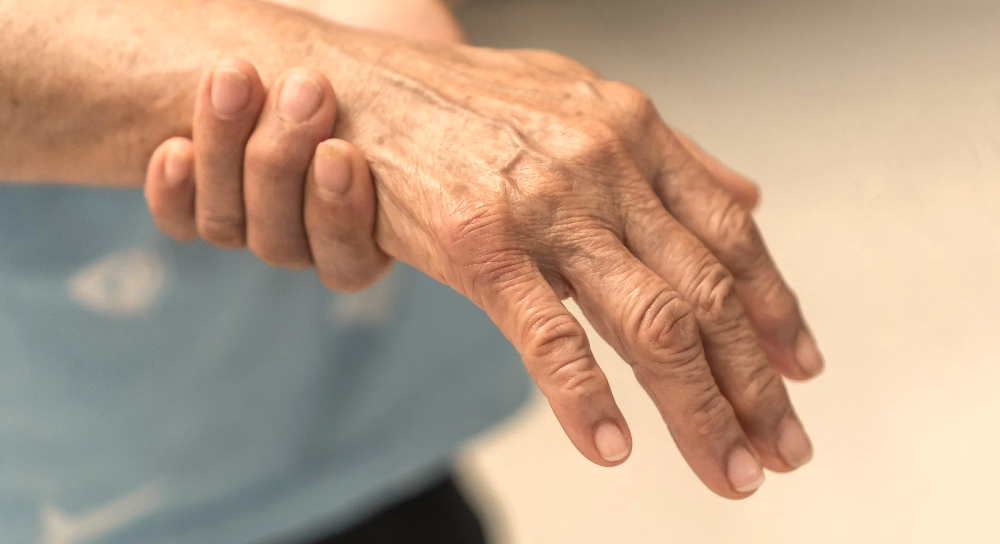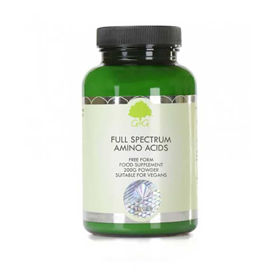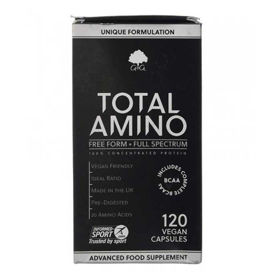Guillain-Barre syndrome (acute ascending polyneuritis) is a form of acute polyneuropathy that causes rapidly worsening muscle weakness and sometimes even paralysis. The suspected cause is an autoimmune reaction - the immune system attacks the myelin sheath. About 80 percent of people develop symptoms five days to 3 weeks after a mild infection, surgery, or vaccination.
Guillain-Barre syndrome: General | Symptoms | Diagnosis | Treatment and Prognosis | Hereditary neuropathies | Questions and Answers | Sources/references
In Guillain-Barré syndrome, poisons can damage peripheral nerves and cause polyneuropathy and, less commonly, mononeuropathy. Polyneuropathy can be caused by cancer when it directly invades or presses on nerves or produces toxic substances.
Polyneuropathy can be caused by poor nutrition and metabolic disorders. Vitamin B deficiency can, e.g., affect peripheral nerves throughout the body. However, neuropathies due to insufficient nutrition are rare.
Diseases that can cause chronic polyneuropathy include diabetes, kidney failure, and severe malnutrition. Chronic polyneuropathy usually develops slowly, over months or years, and usually starts in the legs or sometimes in the hands.
Image: The suspected cause of Guillain-Barre syndrome is an autoimmune reaction.

Poor control of diabetes causes several forms of polyneuropathy. The most common form of diabetic neuropathy, distal polyneuropathy, causes a painful tingling or burning sensation in the hands and feet. Diabetes can also cause mononeuropathy or multiple mononeuropathy, which causes weakness, typically of the eye and thigh muscles.
Symptoms
The syndrome usually begins with weakness, tingling, and loss of sensation in both lower limbs and then progresses to the upper limbs. The most pronounced symptom is weakness. In 90 percent of patients, the weakness is worst 2 to 3 weeks after the onset of the disease. In 5 to 10 percent of patients, the respiratory muscles weaken so much that a ventilator is needed.
About 10 percent of patients need to be fed intravenously or through a gastrostomy tube because their facial and esophageal muscles weaken. If the disease is severe, the blood pressure may fluctuate, or the patient may experience heart rhythm disorders or other autonomic nervous system disorders.
In one form of the syndrome, an unusual group of symptoms occurs, in which eye movements are paralyzed, walking is complex, and normal reflexes disappear. About 5 percent of patients die from Guillain-Barre syndrome.
Image: A doctor can easily recognize chronic polyneuropathy by its symptoms.
.jpg)
Distinct symptoms of chronic polyneuropathy are tingling, numbness, burning pain, and the inability to feel vibrations or the position of limbs and joints. The pain usually worsens at night when touching a sensitive area or when the temperature changes.
Since people with chronic polyneuropathy sometimes do not feel temperature and pain, they often get burned, and due to long-term pressure or other injuries, they also develop open wounds (skin ulcers). Because no pain would warn against excessive strain, joint damage occurs (Charcot's joints). The inability to feel the position of the joints results in leaning when walking and even when the patient is standing. Muscles can weaken and atrophy sooner or later.
Many people with peripheral neuropathy also develop abnormalities in the autonomic nervous system, which controls automatic body functions, e.g., heart rate, bowel function, bladder control, and blood pressure.
When peripheral neuropathy affects the autonomic nerves, the typical consequences are diarrhea or constipation, inability to control the bowels or bladder, impotence, and high or low blood pressure. The skin may become pale or dry, and sweating may be excessive.
Diagnosis
Since we don't have specific laboratory tests, doctors must recognize the disease from the pattern of symptoms. We primarily rule out other possible causes of severe muscle weakness with cerebrospinal fluid tests, electromyography, nerve conduction studies, and blood tests.
Video content: Guillain-Barré syndrome (GBS).
<img class="iframe-placeholder" src="/Themes/MyL
ekarna/Content/img/youtube-place-holder.jpg" border="0" width="88" height="49.5" loading="lazy" data-youtube-frame="https://www.youtube.com /embed/BfJCGpQ9AWM?si=IvJPC9vonOh7RsqL" />
A doctor can easily recognize chronic polyneuropathy by its symptoms. Additional information can be provided by a physical examination and special tests, e.g., electromyography and nerve conduction velocity tests. However, a diagnosis of polyneuropathy is only the beginning; the cause must be found. If the cause is a metabolic disease rather than a physical injury, they may reveal an underlying problem with the blood test.
For example, you can blood tests show pernicious anemia (vitamin B12 deficiency) or lead poisoning. An elevated blood sugar concentration indicates poorly controlled diabetes and elevated blood creatine concentrations indicate kidney failure. Urine tests can reveal heavy metal poisoning or multiple myeloma. In some patients, tests of thyroid function or measurement of the concentration of B vitamins will be appropriate. A nerve biopsy is rarely necessary.
Treatment and prognosis
Guillain-Barre syndrome is a severe illness that requires immediate hospital admission because it can worsen rapidly. Establishing a diagnosis is extremely important because the chances of a favorable disease outcome are much better the sooner we start appropriate treatment.
Patients are carefully monitored so that, if necessary, breathing can be supported with a ventilator. Measures to prevent bedsores and injuries are needed in care, achieved with soft mattresses and by turning the patient every 2 hours. Physiotherapy is necessary to prevent muscle tightening and maintain joint and muscle function.
Once the diagnosis is made, the treatment is a choice of plasmapheresis, which filters out toxic substances from the blood, or infusion of autoimmune globulin. Corticosteroids have not been proven to be helpful and can make the disease worse.
Image: Physiotherapy is necessary to prevent muscle tightening.
.jpg )
Guillain-Barre syndrome patients can recover on their own, but recovery without treatment is often very long. Patients who start treatment early can improve quickly, within a few days to a few weeks. Otherwise, recovery takes several months, but most patients recover almost completely.
Treatment and outcome of chronic polyneuropathy depend on the cause. When associated with diabetes, careful blood sugar control can halt progression and alleviate symptoms, but recovery is slow. Treatment for multiple myeloma and kidney failure can also speed recovery. People with nerve damage due to injury or pressure may need surgery. Physiotherapy sometimes reduces muscle spasms or weakness.
Approximately 30 percent of adult patients and even more children with this disease still have residual muscle weakness after three years. After initial improvement, the disease recurs in about 10 percent of patients, and chronic relapsing polyneuropathy develops. This persistent form of Guillain-Barre syndrome is sometimes helped by immune globulins, corticosteroids, plasmapheresis, and drugs that suppress the immune system.
Hereditary neuropathies
Hereditary neuropathies are diseases of the nervous system inherited from parents to children. The three main categories of hereditary neuropathies are hereditary motor neuropathies that only affect motor nerves. These hereditary sensory neuropathies only affect sensory and motor nerves, and hereditary sensory-motor neuropathies affect both sensory and motor nerves. None of these neuropathies are familiar, but hereditary sensory neuropathies are especially rare.
Video content: Hereditary peripheral neuropathies - a clinical perspective.

Charcot-Marie-Tooth disease (peroneal muscular atrophy), the most common hereditary neuropathy, attacks the peroneal nerve and causes muscle weakness and atrophy in the lower part of the lower limbs. It is inherited in an autosomal dominant manner.
Questions and answers
What causes Guillain-Barre syndrome?
The exact cause of Guillain-Barre syndrome is unknown. The disease usually appears a few days or weeks after a respiratory or digestive tract infection. Rarely a recent surgery or vaccination can trigger Guillain-Barre syndrome. Cases have been reported following Zika virus infection[1].
How common is Guillain-Barre syndrome?
Guillain-Barré syndrome is rare. About 100,000 people worldwide develop GBS each year. To put this into perspective, the world population is about 7.8 billion. Healthcare providers diagnose GBS in about 1 in 78,000 people annually [1].
What are the first symptoms of Guillain-Barre syndrome?
Weakness and tingling in the arms and legs are usually the first symptoms. These sensations can quickly spread and paralyze the entire body[2].
Does Guillain-Barre syndrome also affect children?
GBS can affect children of all ages. Most children diagnosed with GBS make a full recovery without further complications. Recovery often begins within a few weeks of symptoms[3].
Is Guillain-Barre syndrome curable?
There is no known cure for GBS, but treatment can help improve the symptoms of GBS and shorten its duration. Due to the disease's autoimmune nature, the acute phase is usually treated with immunotherapy, such as plasma exchange to remove antibodies from the blood or intravenous immunoglobulin[4].
Image: The first symptoms are weakness and tingling in the arms and legs.
.jpg)
Most people eventually recover, but this can sometimes take a long time, and about 1 in 5 people have long-term problems. The vast majority of people recover within a year. Symptoms may recur years later in some people, but this is rare[5].
Sources and references
Extensive health manual for home use, Youth Book Publishing House
- Guillain-Barre syndrome - https://www.mayoclinic.org
- Guillain-Barré Syndrome - https://my.clevelandclinic.org
- Guillain-Barre Syndrome in Children - https://www.chop.edu
- Guillain–Barré syndrome - https://www.who.int
- Guillain-Barré syndrome - https://www.nhs.uk











 Facebook
Facebook
 Instagram
Instagram
 info@moja-lekarna.com
info@moja-lekarna.com

